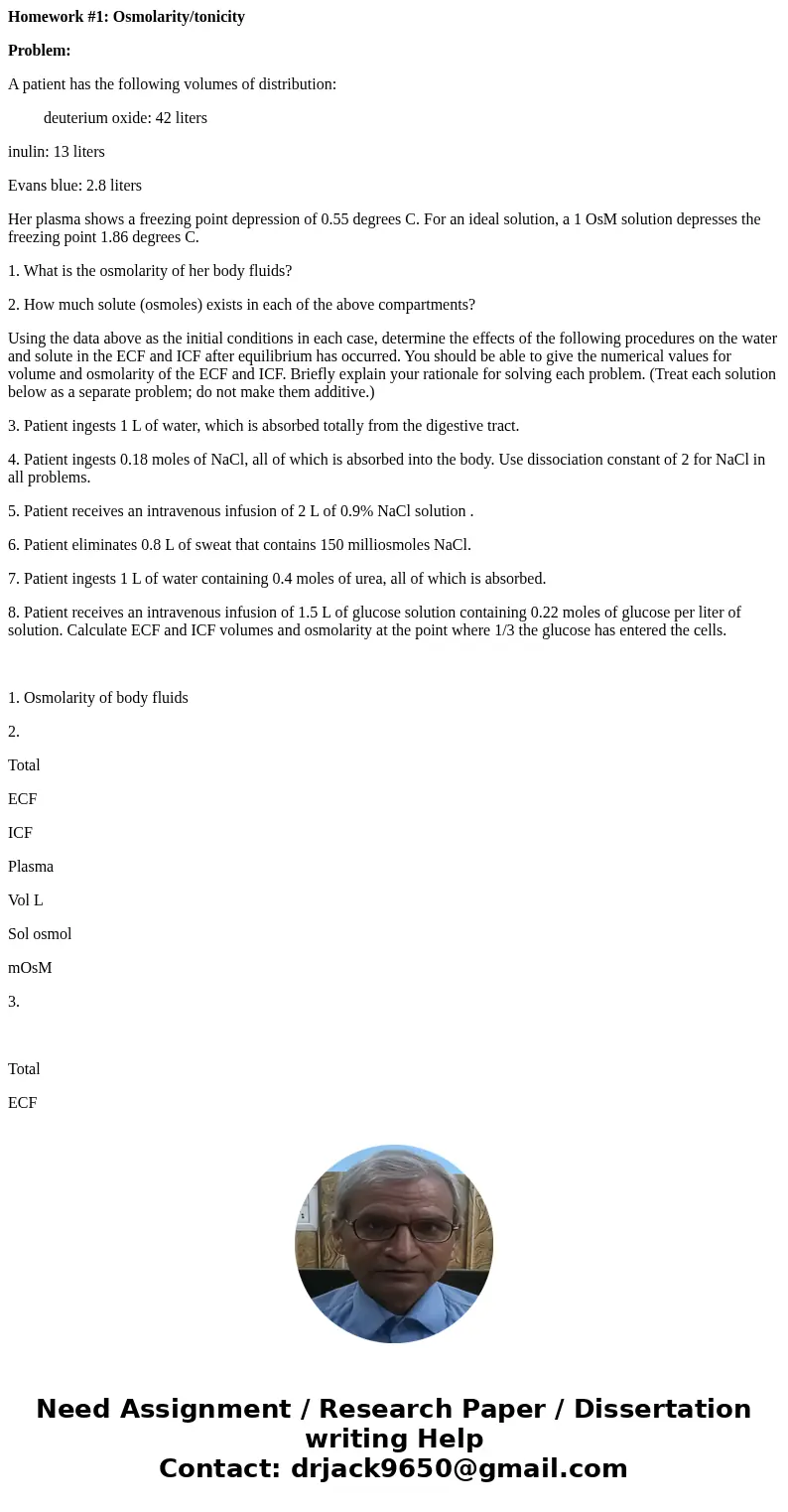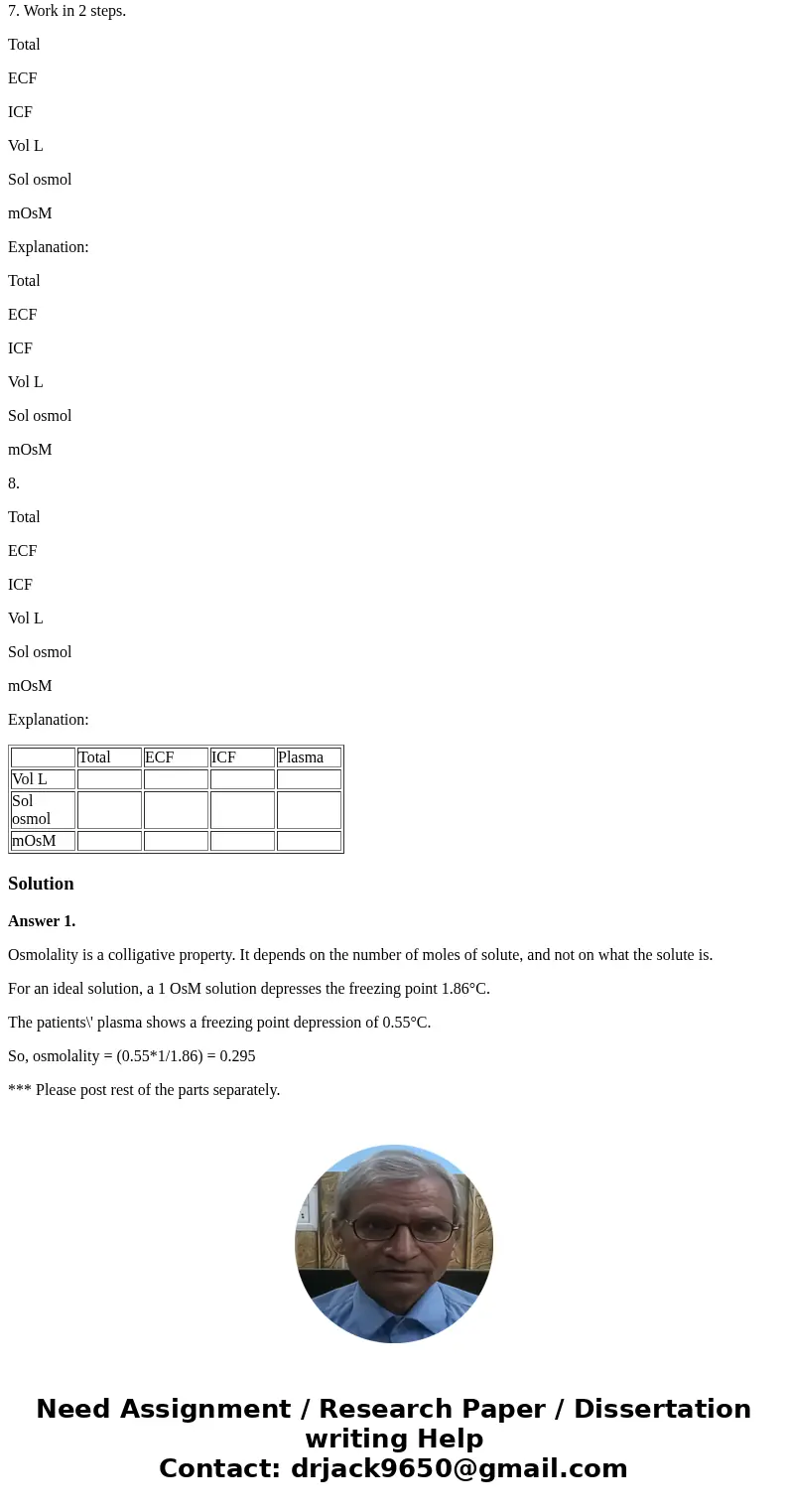Homework 1 Osmolaritytonicity Problem A patient has the foll
Homework #1: Osmolarity/tonicity
Problem:
A patient has the following volumes of distribution:
deuterium oxide: 42 liters
inulin: 13 liters
Evans blue: 2.8 liters
Her plasma shows a freezing point depression of 0.55 degrees C. For an ideal solution, a 1 OsM solution depresses the freezing point 1.86 degrees C.
1. What is the osmolarity of her body fluids?
2. How much solute (osmoles) exists in each of the above compartments?
Using the data above as the initial conditions in each case, determine the effects of the following procedures on the water and solute in the ECF and ICF after equilibrium has occurred. You should be able to give the numerical values for volume and osmolarity of the ECF and ICF. Briefly explain your rationale for solving each problem. (Treat each solution below as a separate problem; do not make them additive.)
3. Patient ingests 1 L of water, which is absorbed totally from the digestive tract.
4. Patient ingests 0.18 moles of NaCl, all of which is absorbed into the body. Use dissociation constant of 2 for NaCl in all problems.
5. Patient receives an intravenous infusion of 2 L of 0.9% NaCl solution .
6. Patient eliminates 0.8 L of sweat that contains 150 milliosmoles NaCl.
7. Patient ingests 1 L of water containing 0.4 moles of urea, all of which is absorbed.
8. Patient receives an intravenous infusion of 1.5 L of glucose solution containing 0.22 moles of glucose per liter of solution. Calculate ECF and ICF volumes and osmolarity at the point where 1/3 the glucose has entered the cells.
1. Osmolarity of body fluids
2.
Total
ECF
ICF
Plasma
Vol L
Sol osmol
mOsM
3.
Total
ECF
ICF
Vol L
Sol osmol
mOsM
Explanation:
4.
Total
ECF
ICF
Vol L
Sol osmol
mOsM
Explanation:
5.
Total
ECF
ICF
Vol L
Sol osmol
mOsM
Explanation:
6.
Total
ECF
ICF
Vol L
Sol osmol
mOsM
Explanation:
7. Work in 2 steps.
Total
ECF
ICF
Vol L
Sol osmol
mOsM
Explanation:
Total
ECF
ICF
Vol L
Sol osmol
mOsM
8.
Total
ECF
ICF
Vol L
Sol osmol
mOsM
Explanation:
| Total | ECF | ICF | Plasma | |
| Vol L | ||||
| Sol osmol | ||||
| mOsM |
Solution
Answer 1.
Osmolality is a colligative property. It depends on the number of moles of solute, and not on what the solute is.
For an ideal solution, a 1 OsM solution depresses the freezing point 1.86°C.
The patients\' plasma shows a freezing point depression of 0.55°C.
So, osmolality = (0.55*1/1.86) = 0.295
*** Please post rest of the parts separately.



 Homework Sourse
Homework Sourse